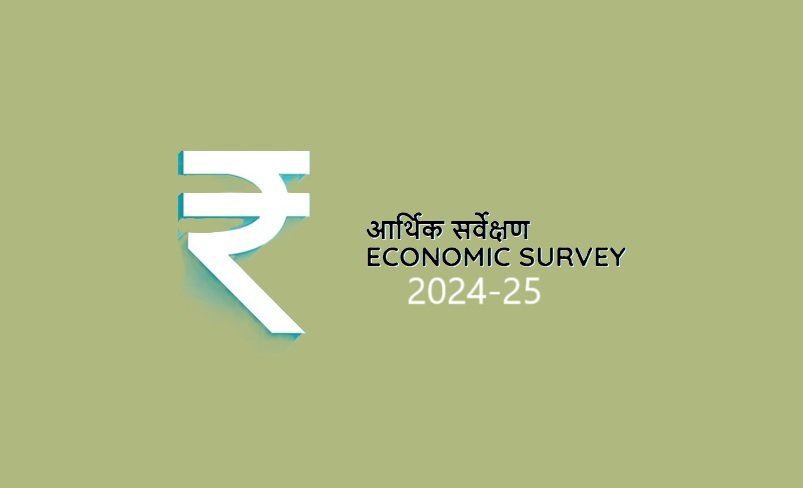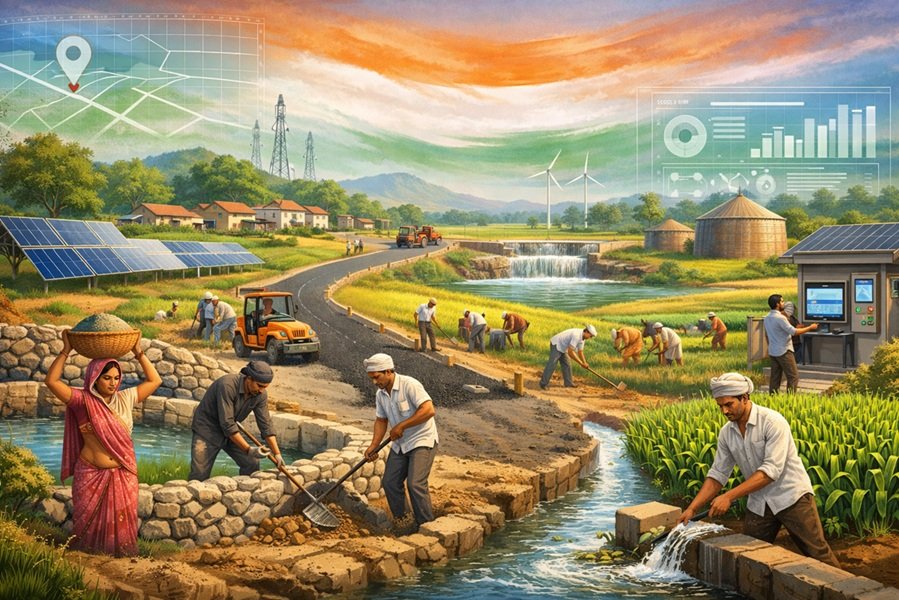
Introduction
The Economic Survey 2024-25 offers a detailed insight into India’s economic performance, challenges, and policy priorities. Presented ahead of the Union Budget, it serves as a guiding framework for fiscal policy and economic reforms. This year’s survey highlights India’s resilient growth amidst global uncertainties, the importance of infrastructure investments, employment trends, inflation management, and the role of digital transformation in sustaining economic momentum.
GDP Growth and Economic Outlook
India’s economic growth remains steady despite global headwinds. According to the survey:
- India’s real GDP is estimated to grow at 6.4% in FY25.
- The IMF projects India’s economy to reach $5 trillion by FY28 and $6.3 trillion by FY30, with an annual nominal growth rate of 10.2%.
- The Ministry of Statistics and Programme Implementation (MoSPI) anticipates a growth rate between 6.3% and 6.8% in FY26.
While private consumption and services have been the main drivers, manufacturing has faced challenges due to global demand fluctuations. Rural consumption has surged due to a strong Kharif harvest and robust agricultural performance.
Inflation and Price Stability
Managing inflation remains a key focus. The survey notes:
- Retail inflation eased from 5.4% in FY24 to 4.9% in FY25.
- Core inflation (excluding food and fuel) is at its lowest in a decade.
- Food inflation has been volatile due to supply chain disruptions, climate shocks, and global commodity prices.
- RBI projects inflation at 4.2% in FY26, aligning with its medium-term target.
Policy measures such as buffer stock management for essential food items, duty-free imports of pulses, and price stabilization funds have been implemented to curb inflationary pressures.
Employment and Labour Market Trends
India’s labour market has shown steady improvement:
- Unemployment rate declined from 6% (2017-18) to 3.2% (2023-24).
- Labour Force Participation Rate (LFPR) and Worker-to-Population Ratio (WPR) increased, indicating higher workforce engagement.
- Net EPFO enrollments doubled from 61 lakh (FY19) to 131 lakh (FY24), signaling greater formal employment.
The report emphasizes the need for skill development, especially in AI-driven industries, and fostering entrepreneurship to leverage India’s demographic dividend.
Infrastructure and Investment Trends
Infrastructure development remains a cornerstone of India’s growth ambitions. The government’s focus areas include:
- National Infrastructure Pipeline (NIP): ₹111 lakh crore allocated from FY20-FY25.
- National Monetisation Pipeline (NMP): ₹6 lakh crore worth of assets earmarked for private participation.
- Post-election capital expenditure on infrastructure accelerated, covering roads, railways, and urban development.
- Tourism, real estate, and urban renewal projects continue to receive significant investments.
The Viksit Bharat@2047 initiative underscores long-term infrastructure expansion to sustain high growth rates.
External Sector and Trade Performance
India’s external sector remains resilient despite global uncertainties:
- Merchandise exports faced moderate growth due to sluggish global demand, but service exports and remittances offset trade deficits.
- The current account deficit (CAD) is expected to remain stable at 2.2% of GDP by FY30.
- India continues to strengthen bilateral trade agreements and diversify its export basket to mitigate risks from geopolitical tensions.
Digital Economy and Financial Sector
The digital revolution continues to shape India’s economic landscape:
- UPI transactions surged, contributing to greater financial inclusion.
- Digital Public Infrastructure (DPI) initiatives like Aadhaar, e-RUPI, and ONDC are enhancing service delivery.
- AI and fintech are projected to drive India’s next phase of economic expansion, with strong policy backing.
Policy Recommendations and Future Prospects
The Economic Survey outlines key policy priorities to sustain high growth:
- Structural Reforms: Boosting ease of doing business, simplifying regulations, and strengthening institutions.
- Capex Expansion: Increasing public-private partnerships in infrastructure.
- Skill Development: Enhancing vocational training for emerging job sectors.
- Fiscal Prudence: Maintaining fiscal discipline while ensuring productive capital investments.
- Sustainability Focus: Strengthening green energy initiatives and climate resilience strategies.
Conclusion
India’s economic trajectory remains strong, backed by prudent fiscal policies, infrastructure expansion, and digital transformation. While external risks persist, the country’s resilience and policy agility provide a solid foundation for sustained growth. The Economic Survey 2025 reaffirms India’s path toward becoming a $5 trillion economy, driven by innovation, inclusivity, and robust governance frameworks.
Visit this : https://www.indiabudget.gov.in/economicsurvey/





